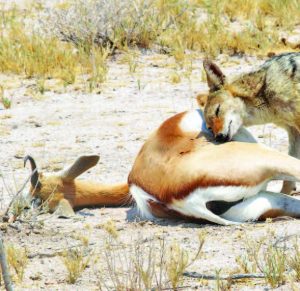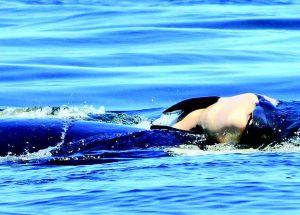There is no denying that animals have feelings. It has been proven in many studies that just like us, animals do have a variety of feelings, sorrow being one of them. They are also sentient beings, after all, and grief is a natural response to loss among sentient beings.
Barry Yeoman reported in his 2018 article for The National Wildlife Federation that animals sometimes become so heartbroken that grief eventually leads to their death.

Since I became a vegan, I have seen countless of pictures and videos of animals suffering, usually at the hands of humans. But one that I could never forget is a cow who seems to be screaming in anguish while her lifeless calf lies in front of her. It reminded me of parents weeping after seeing the lifeless body of their child for the first time.
Death Rituals in the Wild
Animals in the wild also deal with their loss in different ways.
For example, Laura Parker mentioned in her 2016 National Geographic article that elephants showed respect to their dead by guarding the body for a long time, and even going back to the bones once the body had been dealt with by predators — much like how humans would visit the grave of their loved ones.

Dolphins, just like elephants, would also guard their dead for a long time, only leaving the body when they had to return to the surface in order to breathe, as reported by Jason Goldman in his BBC article in 2012. Dolphins would deviate from their usual routines while mourning by traveling slower, staying in the area as long as possible while pushing the body with their beaks, and showing aggression toward other animals who try to approach the dead body.

Some animals, on the other hand, deal with grief differently when mourning the death of their offspring.
Orcas have been known to carry their deceased offspring for a little while. Recently, there was news about an orca carrying her dead baby for more than a week — a record time that caught everyone’s attention. [The grieving whale, known as Tahlequah, belongs to a critically endangered orca species, according to a 2018 report by Tom Embury-Dennis for The Independent. Rather exhausted, the mother whale’s family also helped carry her dead daughter for her, reported Sarah Schweig in a 2018 article for The Dodo. She carried her baby’s corpse for 17 days. -Ed.]

Grief in Companion Animals
Movies that show grieving animals always tug at our heartstrings because we know that stories can be rather close to reality — sometimes, too close to reality. For instance, the movie about Hachikõ the dog who kept coming back to the train station to wait for a human companion who never came back, was based on a true story.

Most, if not all, of us have seen companion animals grieving a loss in real life. There were those who stayed at their human companions’ graves after funerals, those who kept coming back to where they once lived with their humans, those who wouldn’t leave their deceased human’s side, and those who whimpered and cried after hearing a deceased person’s voice.
Losing a loved one could lead to depression and — if not dealt with properly — death, which is why professional help is needed to help an animal deal with grief.
Grieving Farm Animals
Mourning is not only done for the dead. Sometimes, it’s for those who are still alive but have been taken away from us.

Cows are social beings that can form close relationships with each other, especially with their young. It takes nine months until a cow gives birth, so it’s not surprising that mothers easily get attached to their young and feel devastated once dairy farmers take the calves away just a few hours after birth.
Dairy cows usually try to hide or protect their young, sometimes going as far as attacking whoever tries to take away their babies or even chasing vehicles carrying their offspring away. Once a mother cow notices that her calf is gone, she would start wailing and calling for her calf relentlessly.
Unfortunately, there are only a few mother-and-calf reunions: Most female calves are taken away to become dairy cows just like their mothers, while male calves end up becoming veal.
We all have different ways of giving respect to, and letting go of, our dead, but seeing how animals mourn theirs shows us how capable they are of loving others. Hopefully, this changes our perspective on how we treat fellow animals.
This appeared in Animal Scene’s November 2018 issue.






